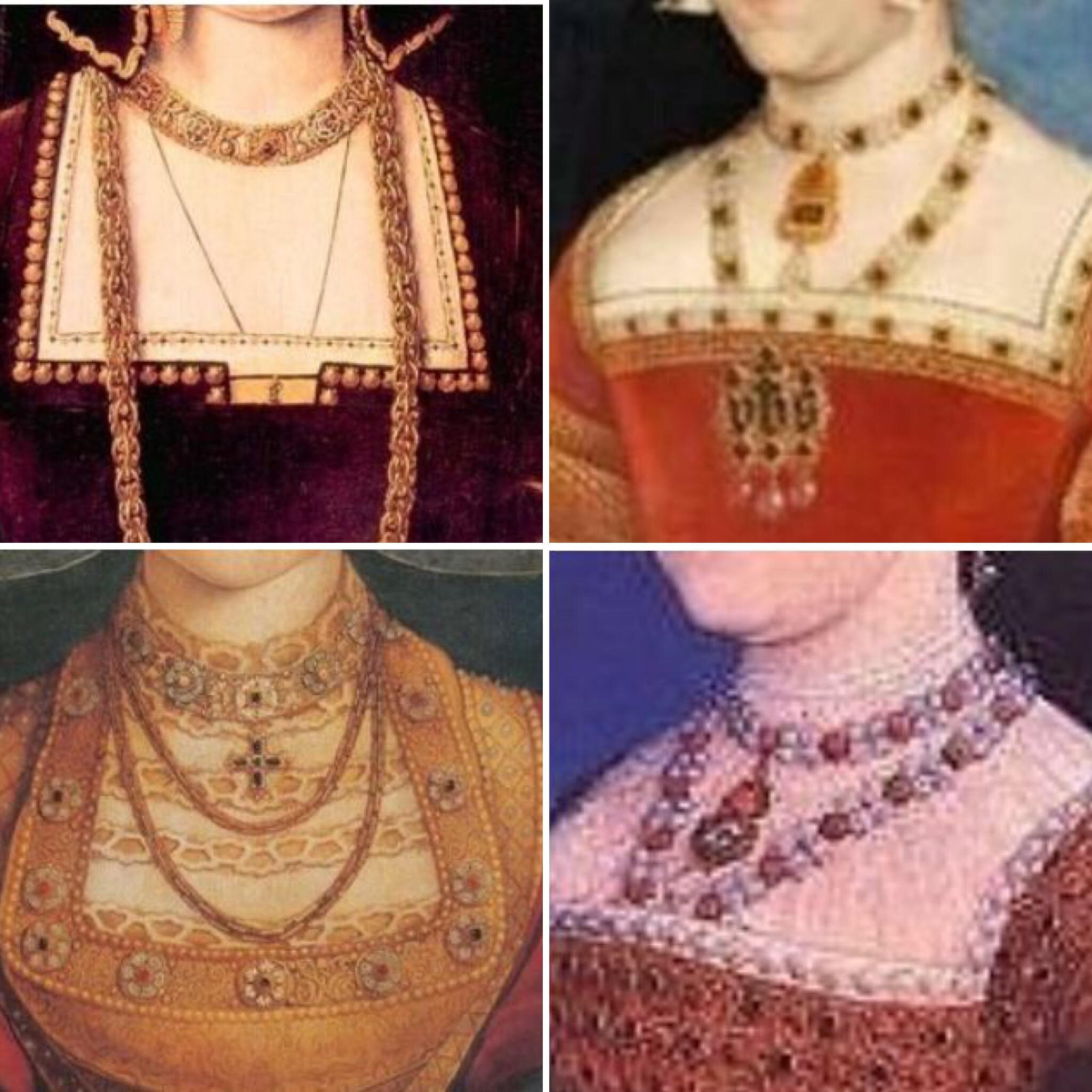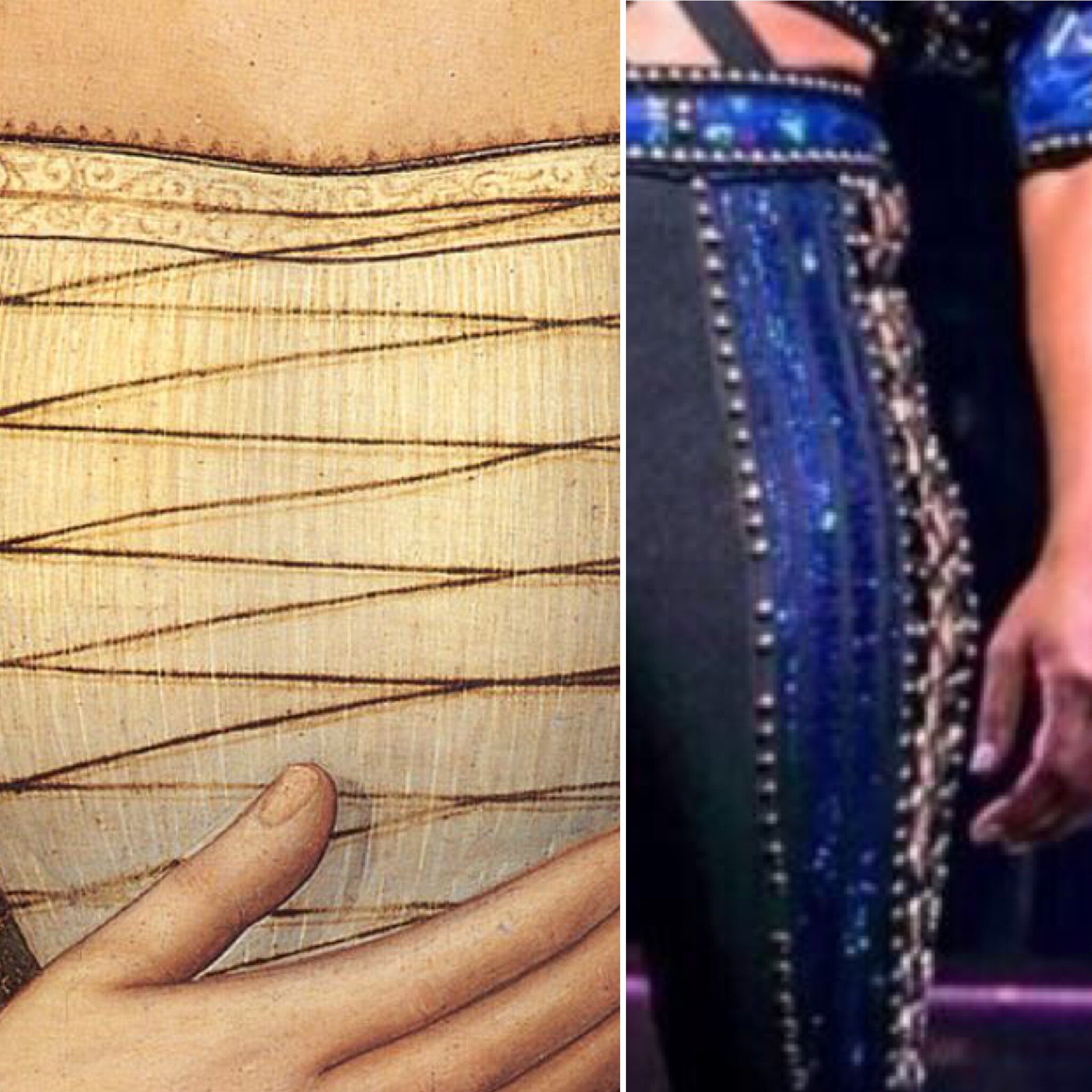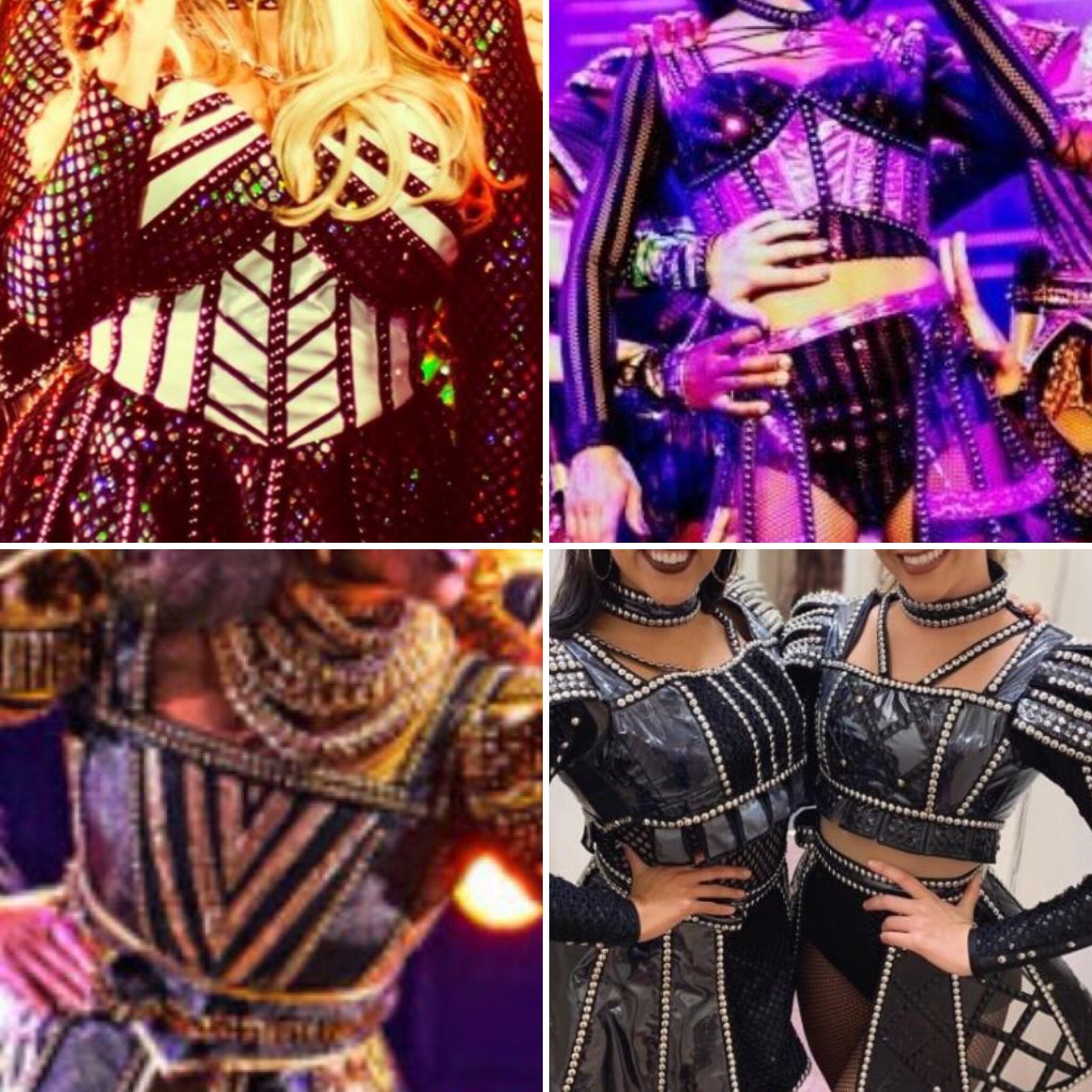The Tudor Fashion Elements of the Costumes in Six (with Painting References!)
All My Six Posts!
Over-Analyzing All the Historical References in Six- “Ex Wives,” “No Way,” “Don’t Lose Your Head” “Heart of Stone” “Haus of Holbein” “Get Down”
The Tudor Crown Inspiration in Six’s Logo; The Tudor Fashion Elements of the Costumes in Six (with Painting References)
Six the Musical Wives 1-3: Historical and Modern Costume Inspirations; Six the Musical Wives 4-6: Historical and Modern Costume Inspirations
The Ladies in Waiting of Six: Historical Inspirations and Costumes; Details from Six Costumer Gabriella Slade’s Instagram Takeover
The Early Costumes of Six the Musical: From Edinburgh to Cambridge to London
Updated Six the Musical Costumes for Broadway!; The Shoes of Six the Musical
The Alternate Costumes of Six the Musical; How the Six Alternates Change Their Styling for Each Queen
Virtual Dance Workshops and Q&As with Different Six Cast Members!
There are lots of specific Tudor fashion elements found in the Queens' looks when you look closely! I compiled a LOT of painting references and closeups on the costumes so you can see exactly what I’m talking about. These are elements that show up in other musicals and plays set in Tudor times as well, and I’ll try to add references to those soon, as there are, of course, many other works than just Six, lol.
Since I’m going to be talking about a few different periods of history here, I’m going to do a quick overview of the years we’re working with:
The Tudor period started under Henry VII, Henry VIII’s dad, when he defeated Richard III at the Battle of Bosworth. Henry VII reigned from 1485-1509.
Henry VIII lived from 1491-1547 and reigned from 1509-1547.
Catherine of Aragon (1485-1536) - was married to Henry from 1509-1533.
Anne Boleyn (~1501-1507 - 1536) - was married to Henry from 1533-1536.
Jane Seymour (~1508-1537) - was married to Henry from 1536-1537.
Anne of Cleves (1515-1557) - was married to Henry in part of 1540.
Catherine Howard (~1523-1542) - was married to Henry from 1540-1542.
Catherine Parr (1512-1548) - was married to Henry from 1543-1547 (when he died).
Edward VI (Henry VIII’s son with Jane Seymour, 1537-1553) reigned from 1547-1553.
Mary I (Henry VIII’s daughter with Catherine of Aragon, 1516-1558) reigned from 1553-1558.
Elizabeth I (Henry VIII’s daughter with Anne Boleyn, 1533-1603) reigned from 1558-1603.
^The gable hood of Catherine of Aragon, the French hood of Anne Boleyn, and Catherine Parr’s feathered hat.
Hairpieces/Head Coverings: Every queen wears a headpiece or hair piece of some sort but they have different styles; this represents that in Tudor times, ALL women would have their hair covered in some way at all times (ignore the hair in The Tudors y'all, it's just...hilariously wrong).
Famous hats included the Gable hood (seen on Catherine of Aragon and Jane Seymour) and the French hood (popularized by Anne Boleyn and seen in her portrait and in Katherine Howard's supposed portrait). Women even started wearing male hat styles at times, as seen in Catherine Parr’s portrait.
^These photos demonstrate the square necks and the plentiful jewelry and neck elements evoking jewelry both in Tudor portraits and the costumes of Six.
Jewelry/Bling: Necklaces and jewelry were big in Tudor times, noble ladies would often wear lots of rings, bracelets, and several necklaces. You can see this in their portraits. The Six Queens play off this by wearing a lot of different sparkly jewelry in their costumes as well. Aragon has a huge pile of gold necklaces, they all wear earrings, Anne Boleyn wears sparkly fingerless gloves, both Boleyn and Howard wear their initial necklaces, and the neckline details seen in the costumes of Seymour, Cleves, and Howard, all evoke the jewelry seen in so many of these portraits.
Necklines: Wide and low cut square necks were very big under Henry VIII, you can see this in the necklines of several of the queens' costumes, including Catherine of Aragon and Anne of Cleves (if you ignore the cross crossing detail on Cleves’ costume). Jane Seymour and Katherine Howard also have wide and low cut necklines, although this is more of a sweetheart look.
Sleeves: All Tudor women would have worn long sleeves coming down at least to the wrist, and sometimes below that. These long sleeves, or elements of them, at least, are seen in the costumes of Catherine of Aragon, Jane Seymour, and Katherine Howard.
Lacing: There's a lot of lacing elements prevalent in the main queens' outfits and in the alternates outfits, in various pairs of pants, sleeves, and necklines, and connections between tops and bottoms. Most of these are cross lacing (Xes) and others evoke spiral lacing or even ladder lacing. These even show up in some of the fabric patterns and the way they’re cut and laid out! This looks to be a reference to the side, front, and back ties often found on Tudor gowns, although in reality, Tudor gowns were generally spiral laced or ladder laced rather than cross laced (Xes); what you see at renaissance faires is not generally accurate. You can see what I mean in the collection of painting references; all of these show spiral lacing or ladder lacing except for one Italian painting, which shows Xes which are almost certainly more decorative than practical. The other forms of lacing are simply more supportive and adjustable, which is the entire idea behind having lacings in an outfit anyway, after all.
Major thanks to Festive Attyre’s post on spiral lacing for all their painting references for this section.
Boning/Stay Type elements: I believe the strong vertical and diagonal stripes present in all the queens' costumes, and specifically those that “look” supportive may refer to boning within dresses and supportive stays. These aren’t overtly Tudor, as they’re generally associated with later time periods, and I unfortunately don’t have any painting references for this because they were explicitly /underwear/ and not something that would show up in art, but we do know that whalebone was used for support in women’s garments at least by the time of Elizabeth I’s death, as her effigy wore a corset containing whalebone. I’ve included a picture of the effigy corset and a few pictures of historical reproduction corsets so you can see what I mean.
Ruffs: Big neck ruffs are seen on The Ladies in Waiting (the in-house, on stage, all female band) and during the Haus of Holbein number. Neck ruffs like this ARE Tudor, but weren’t seen until quite a while after Henry VIII’s death; you didn't really see neck ruffs until Elizabeth I. (if you’d like to read more about the Ladies in Waiting’s costumes and historical influences, I have a whole blog post on that over here!)
Split Skirts/Contrasting Underskirt: The open front skirt, revealing hot pants under it, are a pretty obvious style reference to the classic Tudor dress look where a kirtle (underdress) was layered under a contrasting overdress. This isn’t too obvious in a lot of the six wives’ portraits, but you can totally see it in the above portrait of Princess Elizabeth (the future Elizabeth I).
Howard is the only main queen that has this style of skirt (Aragon does too, but hers blends in with the rest of her gold and black and isn’t a distinctly contrasting color), but a LOT of the alternate costumes have this look.
















